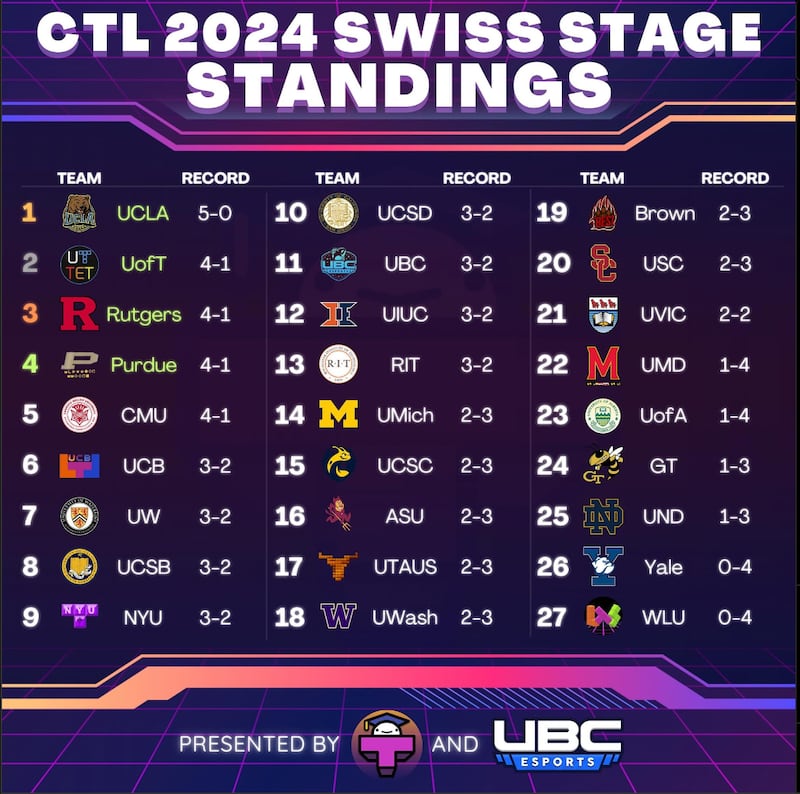The Collegiate Tetris League has just ended and that marks the first official season of the newly formed Trojan Tetris Team. What began as a personal project from a USC freshman, turned into its own USC esports team.
It all started at the beginning of the semester, when user Qep, better known online as Qepsi, a USC freshperson and global top 100 ranked player, posted a message on various USC esports Discords in search of fellow Trojans sharing their love of competitive Tetris.
« I’m looking for Collegiate Tetris League teammates - please reach out if you’re interested, or know someone who may be! » the message read.
This call to Tetris action quickly garnered attention around the USC gaming community and, in less than two weeks, a full roster of five players and three substitutes was established to face off the rest of the collegiate scene.
When asked what drove them to start this Tetris project, Qepsi answered:
« I think my plan was more to find Tetris players, because I like talking to Tetris players. I think Tetris is such a huge part of who I am that it’s very easy for me to be friends with someone who plays Tetris. [...] I really just wanted to establish that community at USC. »
Their teammate Lian « neonLian » Fouse, who is a USC freshman, agreed that the spirit of the team was much more around camaraderie rather than competitiveness.
« I mostly just find it as an opportunity to have fun. I’m not sure if we’re even an official esports or anything like that, but being able to represent the school is cool. »
Competitive Tetris?
When thinking of competitive gaming, an almost 40 year old game is not the first thing that comes to mind. Yet, the Tetris competitive scene is well established both in the collegiate and professional realm.
For the collegiate league that our Trojans participate in, the format is a Swiss stage bracket until a top 4 emerges, which then goes on to compete in semi and grand finals.
The games are played in 5 sets with each one being a 1v1. Each round won in a set is a point earned for your team, with the winner of the overall set getting an additional point. You win your set by reaching 7 round winds before your adversary.
Thus, a person who wins 7-3 over an opponent will bring back 8 points to their team. Their opponent will only bring back 3.
The team with the most points after 5 sets, is the winner!

Tetris Tactics: On and Off the Grid
Modern-day competitive Tetris is much more tactical than one might think. While the gameplay resembles the 1985 classic, the 1v1 format adds layers to the competition.
For the first two 1v1s, each team sends in a chosen player without knowing their direct adversary. After these two matches, the losing team can counter pick their opponent.
These counterpicks can be the difference in a game. A worst ranked player scratching a few rounds away from a stronger adversary can be the decisive factor. Teams will even purposefully send their lesser-ranked player to try and neutralize a tougher opponent, so their own higher-ranks can easily beat their adversaries.
«Being one of the relatively lower ranked, compared to most players in the league, that means I get matched up against players that are a lot better than me a lot of the time. But that makes it so when I do even just scrape one round away from somebody who’s considerably better than me, that’s an amazing feeling, » explains Lian.
Qepsi adds that the gameplay in itself is much more rigorous than one might expect.
« At a high level, you have to mentally place six pieces or so on your board in a fraction of a second and then execute it; obviously, with precision. But the thinking is really the important part. »

A Successful First Season
The Trojan Tetris Team ended their first season towards the bottom of the seedings. Yet, Qepsi explains that the team did not necessarily focus on good performances this year.

The goal was to establish a Tetris community at USC. Which has been successful, according to its founders.
When asked if they were excited about being the first Trojan Tetris team and if they would continue, Qepsi answered: « I think it’s really sad that we’re the first but I’m pretty glad I found these people to play with. I think that we’re going to be around for a while. »
Lian shared the same motivation.
« I had a lot of fun with it this year. So I definitely look forward to joining again next year. »
Annenberg Media Gaming & Esports reached out to USC Esports Program Director Joe Jacko on whether the team would be included in the Trojan Esports roster next year.
« We’d love to have them! Trojan Esports’ goal is to support teams and titles that our students want to play and compete in, so in a case such as this where a student created and captained a team in a grassroots fashion that’s exactly what we’re looking to develop! Congratulations to the team on such a great start! »
